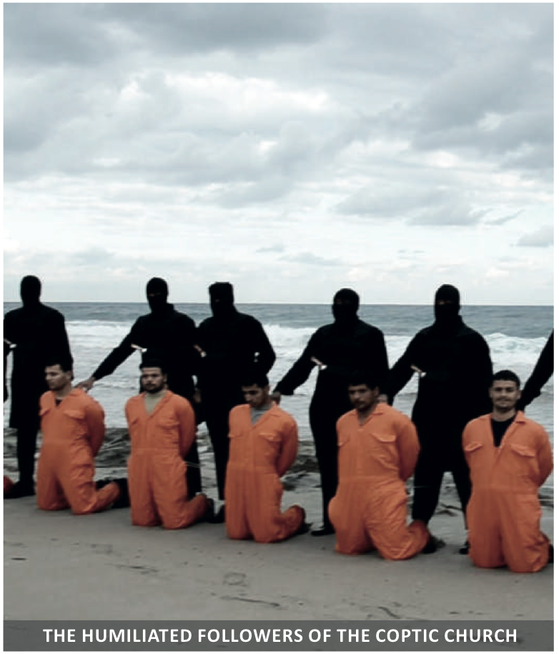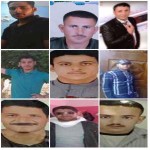The Muslim Brotherhood has a proven history of violence going back to 1928. The reader must understand the Obama administration full acceptance, support and application of the Muslim Brotherhood doctrine.
Part 1 of 5
The Betrayal Papers will trace the influence of the Muslim Brotherhood in the Obama administration’s foreign and domestic policies. The five-part series will present a picture of a conspiracy that is manipulating the American government to the benefit of a totalitarian, genocidal movement that seeks to establish a global Islamic State.
- The Muslim Brotherhood is an international political, financial, terrorist and movement whose goal is to establish a global Islamic State (Caliphate).
- They have and continue to exert tremendous influence of the American government’s foreign and domestic policies under President Barack Hussein Obama.
- The violence in the Middle East and across North Africa is a direct consequence of the Muslim Brotherhood’s effective control over American foreign policy in the region.
- They operate through various “civic” front groups, as well as through American institutions who take their money as operational funding (Georgetown University, Brookings Institution).
In America, we have a weak and struggling economy, growing public and private debt, and millions are un- and underemployed. While a weaponized IRS targets Tea Party groups and other voices of liberty, and military veterans are labeled as “domestic terrorists” by the Department of Homeland Security, the federal government refuses to secure the southern border. Educational policy now includes the teaching Arabic and visits to mosques for schoolchildren.
Internationally, America is in retreat. The Middle East is in ashes, and in the midst of an ongoing genocide replete with daily horrors, the likes which have not been seen for centuries. Former allies have been abandoned and are embittered. Under the present leadership in the White House and State Department, Israel is considered the aggressor and Hamas the oppressed.
In sum, the world is at its most volatile point since the outbreak of World War II.
If you think that this is a result of something other than an “incompetent,” “stupid,” or “clueless” President, words regularly used by those who sense something is wrong but, can’t quite bring themselves to own up to the ugly truth, you’re not alone.
Millions of Americans are realizing that the Obama administration is not merely “misguided.” It is actually and consciously anti-American, anti-Semitic, anti-Christian, and broadly anti-Western. Yet , the American public does not yet fully appreciate why and how the administration always finds itself square against everything this country is based on – religious freedom, capitalism, and justice under law.
This series of articles will explain the force and mechanics behind Obama’s anti-American global agenda: the Muslim Brotherhood.
Al-Ikhwan al-Muslimoon: The Root of Today’s Islamic Evil
Founded in 1928, the Muslim Brotherhood (aka, the Society of Muslim Brothers, or Al-Ikhwan al-Muslimoon in Arabic) is an international movement (some would argue an international conspiracy) that seeks to establish a worldwide Islamic State (or Caliphate). When it was created in the late 1920s, the Brotherhood was a contemporary of the Nazi Party of Germany. Indeed, the leader of the Muslim Brotherhood in Palestine, Amin al-Husseini, is considered by some as the man who catalyzed the Holocaust; for it was only after Husseini visited Hitler in Berlin in 1941 that the systematic extermination of Jews and other minorities began with industrial efficiency.
After the war, despite the insistence by many wartime leaders (Churchill included) that he be brought to justice, Husseini escaped to the Middle East. He lived there until his death in the 1970s, serving as a mentor to a young Yasser Arafat. Husseini and the Nazi Party are the connection points between the Holocaust and today’s Middle Eastern genocide.
The Allies conscious failure to arrest and prosecute Husseini haunts us today.
A Terror Hedge against Stalin and Soviet Russia
At the beginning of the Cold War, working with former Nazis, the American CIA began to court the Muslim Brotherhood as an ally against Soviet Russia. This calculus may have made sense when facing down Josef Stalin, a totalitarian tyrant hell-bent on world domination, but it has proved a costly strategy in the long run.
In the years and decades that followed World War II, the Muslim Brotherhood has evolved into a modern day Nazi International, not unlike the old Comintern (Communist International). It has a vast network of financial and business interests across the world; it has agents, supporters, and apologists within western governments; and it has a support network of “civic” organizations in the West.
These all serve as a cover for its darker and insatiably violent ambitions.
For despite all their intrigue and political gamesmanship, the Muslim Brotherhood is not strictly a political movement, nor a financial cabal. It’s also the mothership of virtually all Islamic terrorist groups operating in the world today, including Al Qaeda, ISIS, Hamas, the Taliban, Boko Haram, and many more. Such groups, all children of the Muslim Brotherhood’s fanatical Islamic ideology, are today ethnically cleansing countries such as Libya, Syria, Iraq, and Nigeria of all traces of Christianity. No less than the President of Egypt, Muslim Abdel Fattah el-Sisi, a devout Muslim, has said as much.
Considering how the Muslim Brotherhood and their terrorist pawns treat fellow Muslims in Egypt, Libya, Syria, and Iraq, butchering them by the bushel including women and children, it should come as no surprise that Egypt and Saudi Arabia have declared the them a “terrorist” organization.
It should also come as no surprise that the United Arab Emirates has designated Muslim Brotherhood front groups operating in the United States “terrorist” entities. In November, the UAE effectively declared that the Council on American Islamic Relations (CAIR) and Muslim-American Society (MAS) were no different than Al Qaeda. Why? It’s because they share a common origin in the Muslim Brotherhood. One could add to this list of domestic terrorist collaborators and enablers the Islamic Society of North America (ISNA), the Muslim Public Affairs Council (MPAC), and the Muslim Students Association (MSA).
A New HQ in America
Equally alarmingly, all-American institutions such as Georgetown University and the Brookings Institution have accepted so much money from the Muslim Brotherhood government in Qatar, that their political positions are virtually indistinguishable from the Muslim Brotherhood’s domestic front groups!
Yet, the United States government does not see these organizations and their employees as the enemy, as apologists for the worst kinds of barbarity. In fact, the highest profile people from these organizations advise the Obama administration, including the Department of Justice, the Department of Homeland Security, the FBI, and the National Security Council. In January, the Department of State actually welcomed the Muslim Brotherhood to a meeting, and shortly thereafter Egypt exploded in jihadi violence. This is no magical coincidence.
To the detriment of our safety and well-being, the domestic Muslim Brotherhood front groups help dictate counterterrorism policies. It is their influence which leads to the farcical idea, recently expressed by Obama at the National Prayer Breakfast, that the Crusades have something to do with ISIS and the mass murder of innocents in the Middle East today.
These front groups shape our foreign policy, which since the Arab Spring and continuing to this day is on the side of the Muslim Brotherhood.
So-called “moderate Muslims” employed at these front groups have made the country of Qatar, a totalitarian sharia-based society, and an “ATM for terrorists,” the closest ally of the United States under Obama’s Presidency. With enthusiasm from Obama and Eric Holder, they have us emptying Guantanamo Bay of the most vicious killers and sending them to Qatar, with only the vaguest of security assurances.
The remaining four articles will explore the influence of the Muslim Brotherhood on American policy, both foreign and domestic (including in Common Core, Obama’s position on illegal immigration and amnesty, and the hostility of the administration toward police officers). The exposé will also detail the operatives in the government who work to advance the Muslim Brotherhood’s ambitions for a worldwide Caliphate. And it will put into context the mysterious influence that George Soros and Valerie Jarrett have over Barack Hussein Obama, his administration, and the policies that affect every American.
The Betrayal Papers is a collaborative effort by the Coalition of Concerned Citizens, which includes: Andrea Shea King, Dr. Ashraf Ramelah, Benjamin Smith, Brent Parrish, Charles Ortel, Denise Simon, Dick Manasseri, Gary Kubiak, Gates of Vienna, IQ al Rassooli, Jeff Bayard, Leslie Burt, Marcus Kohan, General Paul E. Vallely, Regina Thomson, Scott Smith, Terresa Monroe-Hamilton, Colonel Thomas Snodgrass, Trever Loudon, Wallace Bruschweiler, and William Palumbo.



